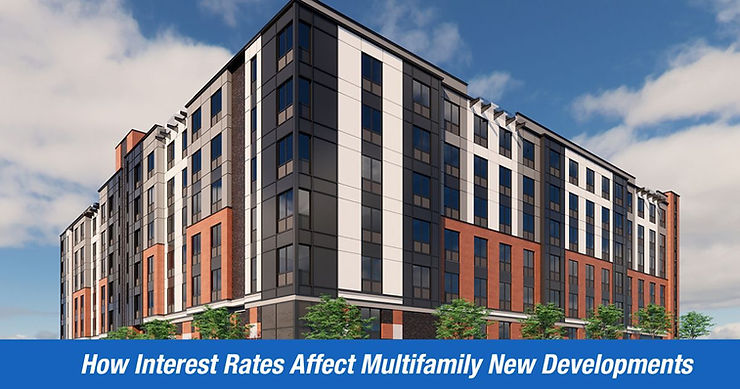
Tax abatements are powerful policy tools that local municipalities can employ to incentivize real estate investors and developers to construct, rehabilitate, and maintain properties in particular communities and neighborhoods.
Legislatures in 44 states across the country authorize their local governments to enter into tax abatement agreements with developers. In New Jersey, tax abatements were first introduced as part of the Urban Renewal Corporation and Association Law of 1961, which was enacted in the hopes that proper incentives could combat urban decay, encourage redevelopment, and spur population growth.
Commonly known as the Fox-Lance law, the legislation established 15-year tax abatements for developers completing new construction projects. In exchange, municipalities would receive payment in lieu of taxes (PILOTs) from developers equivalent to either 15.0% of the annual revenue generated by the property or 2.0% of its construction cost.
The Fox-Lance law was later amended so that tax abatement agreements made between municipalities and developers after August 14, 1986, could be extended for another 15 years. In 1991, the Fox-Lance law was repealed and replaced with the Long Term Tax Exemption Law, which established tax abatement (and PILOT) arrangements that could last either “30 years from the completion of the entire project…35 years from the execution of…[a tax abatement] financial agreement, or…50 years from the execution of the first financial agreement implementing a project under the redevelopment agreement.”
Local Government Tax Abatement Options

The Long Term Tax Exemption Law, which remains in effect today, gives pro-development city councils and economic development departments in dozens of municipalities across New Jersey broad authority to ink tax abatement agreements with tax-conscious developers and investors.
Some locales across the state even offer as-of-right tax abatements. This legal concept grants developers constructing or rehabilitating properties the right to obtain tax abatements without seeking out special permits or variances. While developers will still need to fill out brief applications for these incentives—meaning that as-of-right tax abatements stop short of being automatically applied—the process for approval is fairly straightforward.
Notably, developers who enter into as-of-right tax abatement agreements with local governments may do so outside the often protracted and bureaucratic entitlement process. This streamlines the tax abatement approval workflow and saves both parties time and resources.
Of course, local governments are decentralized, so each will have unique procedures and requirements for developers wishing to obtain as-of-right tax abatements. Developers requesting shorter, five-year tax abatements will find, however, that application procedures in different municipalities across the state share a fair degree of overlap.
Section 455-6 of the Paterson Municipal Code, for example, declares that applications for tax abatements “shall be filed with the [office of the Paterson Tax] Assessor not later than 30 days, including Saturdays and Sundays, following the completion of the improvement, conversion alteration or construction [of a property.” Once submitted, developers can expect a response “within 60 days of the filing of the application.”
Section 275-6(A) of the Passaic City Code reveals an essentially identical 30-day application deadline, although Section 275-6(A)(3) mentions that “every properly completed application for exemption…shall be allowed by the Assessor not later than 30 days of its filing.”
Similar procedures exist for entering into tax abatement agreements with other developer-friendly municipalities in New Jersey. Section 753-7 of the Camden City Code remarks that “the City may authorize abatements for improvements on an individual basis after review, evaluation, and approval of each application” and that some applications—presumably including those requesting longer tax abatement periods—may additionally warrant “review and approval by the City Council.”
Sections 268-12 of the Trenton Municipal Code, meanwhile, specifies that developers must file a 10-item application detailing site plans, project costs, forecasted PILOT payments, estimated post-abatement property tax payments, and other information “with the Assessor within 30 days, including Saturdays and Sundays, following the completion of the improvement, conversion alteration or construction.” The following section of the code is generous and notes that “every application for exemption which is filed within the time specified shall be approved and allowed by the Assessor to the degree that the applications [are] consistent with the provisions of this article and the tax agreement.”
Common Tax Abatement Lengths in New Jersey

Another item of note is the length of the tax abatement period. As a reminder, the municipal ordinances cited above describe application procedures for five-year tax abatements, which is the length most commonly approved. That said, municipalities routinely grant 20-year abatement periods, although with significantly less frequency than five-year terms.
Take Paterson, for instance. As of April 2023, more than 400 new developments in the city have been granted tax abatements. Roughly 290 of these projects have received five-year abatement terms, while another 120 were granted 20-year terms.
Similarly, Passaic mostly grants between five- and 20-year abatement periods, although in, August 2023, the city council granted a 30-year term to developers constructing a 300,000-square-foot warehouse.
While the Long Term Tax Exemption Law allows for tax abatement arrangements of up to 50 years, long abatement arrangements are rare in practice.
How Do Municipalities Benefit From Tax Abatements?
Local governments face tough choices when it comes to offering (or not offering) tax abatements to real estate developers.
On the one hand, municipalities considering tax abatements are sometimes already struggling with a dwindling tax base due to population decline and urban blight, which means they have an urgent, present-day need for tax dollars. On the other hand, municipalities need to attract investors willing to redevelop blighted neighborhoods to address the root cause of their fiscal and demographic woes.
However, attracting investor capital and developer talent is challenging when a municipality’s prospects look bleak. Unlike local governments, real estate developers are not tethered to a geographical location. Instead, developers will often “shop around” before settling on a locale to break ground in. This means that a city must be sufficiently attractive and de-risked before developers are willing to build without tax incentives.
In that light, tax abatements—while an imperfect and at times contentious solution—can adequately remedy a struggling municipality’s two existential problems. First, although the city’s public coffers will not be filled overnight, the tax abatements’ PILOT arrangements provide some immediate relief. The city will earn less revenue from PILOTs than from levying property taxes at full assessed value, but these concessions are temporary. Once the abatement period ends, the city can charge full property taxes on the redeveloped (and thus far more valuable) properties.
Second, these tax abatements provide upfront incentives to developers, encouraging them to build and invest now rather than later. Because redevelopment rapidly reduces blight, it also quickly transforms the city into a more attractive place for subsequent investors. If executed successfully, municipalities may only need to offer tax abatements to a handful of early developers. Once sufficient momentum is established, and the worst of the blight is cleared, other developers may begin to participate, even if the city does not provide them with the same tax incentives.
Jersey City Stages Turnaround
In fact, city councils of some of the most prosperous cities in the state have reaped tremendous long-term benefits by offering tax abatements to developers.
Jersey City, located about two miles from lower Manhattan on the west bank of the Hudson, is an excellent case in point. Incorporated in 1838, the city’s population grew uninterrupted until the 1930s, when it peaked at around 316,000 residents.
Over the following five decades, Jersey City underwent a period of chronic decline. High crime rates, ballooning unemployment, political corruption, and social unrest caused a mass exodus of both companies and residents.
By 1980, Jersey City housed just 223,000 people—roughly two-thirds of its 1930 population. Over the previous decade, the city had lost nearly 40,000 residents and 5,000 jobs—suffering a 14.1% and 9% decline in population and jobs, respectively.
To revive the city’s fortunes, lavished tax incentives on developers beginning in the 1980s. In 1986, Jersey City provided tax abatements to the LeFrak Organization to encourage it to redevelop a 600-acre site, then home to factories and railyards.
The project, known as Newport, cost $10 billion to develop. Today, the master-planned community is home to 15 apartment buildings, five million square feet of office space, and the 1.1 million square foot Newport Centre shopping mall.
Downtown Jersey City—roughly a mile south of Newport—was similarly transformed during this era. Today, the city’s “Wall Street West” boasts 18 million square feet of office space and is host to every one of the state’s 10 tallest buildings.
What About Other NJ Urban Areas?

Of particular interest to local governments and developers today is whether other cities in the Garden State can use Jersey City’s 1980s playbook to achieve similar results in the 2020s.
Some nearby municipalities like Paterson have already started to use tax abatements to entice developers to construct commercial and residential projects in redevelopment zones, such as the city’s 1st, 4th, and 5th wards.
Paterson expects the city’s most recent tax abatement agreements to expire within six to 10 years. This means that over the next decade, Paterson’s tax base is expected to eclipse its high-water mark of $6.3 billion, which it notched in 2020.
Camden, the poorest city in the state, has also aggressively used tax abatements in the hopes that it can revitalize its struggling economy and aging housing stock. About $1.6 billion, or 60% of the city’s $2.5 billion in real estate, is left untaxed under developer abatement agreements.
Although these measures are criticized by local activists, who worry that the city cannot afford to forego more tax revenue because it is already running significant budget deficits, Camden’s city council appears oriented toward the long term.
The city’s tax abatements managed attracted a sizable number of large companies to the area. Automobile manufacturer Subaru, public utility company American Water, and energy technology company Holtec have constructed headquarters or operating facilities worth $247 million in the city. Tax incentives have also spurred multifamily construction, including the $145 million redevelopment of the 23-acre Ablett Village site in East Camden.
Better Tax Strategies for Higher Returns
With over $1 billion in combined transaction volume, Veloce Capital commands industry-leading expertise in the New York and New Jersey multifamily markets.
Our principals are intimately familiar with the nuances of state and local tax provisions and have deep relationships with cities across New Jersey. We couple a highly tax-conscious investing strategy with four unique fund types that allow both accredited and non-accredited investors to enjoy the benefits of a fully passive approach to real estate investing.
Reach out to us today to learn more about investing with Veloce Capital as a limited partner.








